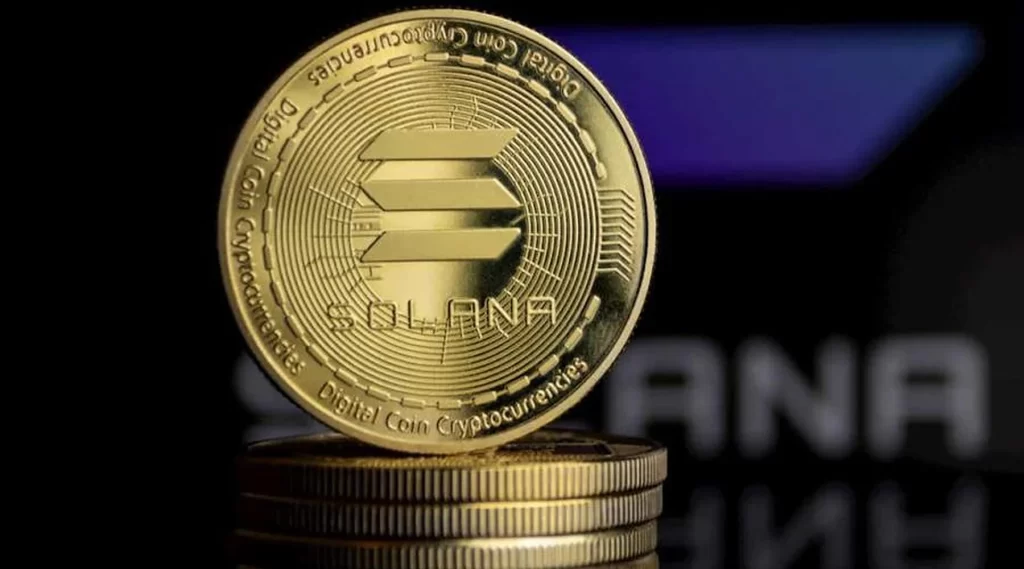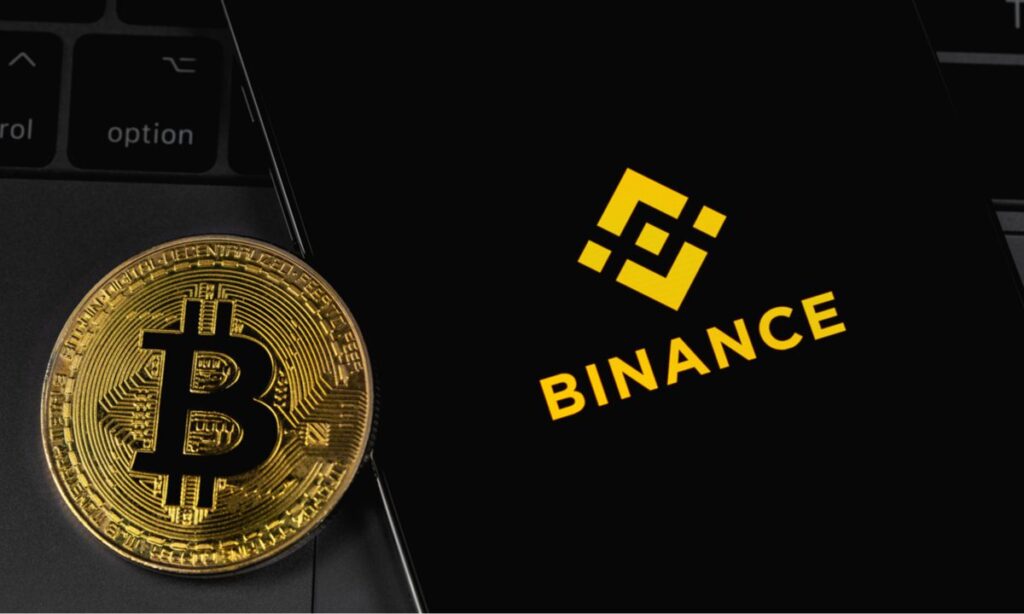Coinbase has initiated legal action against the United States Securities and Exchange Commission (SEC) and the Federal Deposit Insurance Corporation (FDIC), according to a FoxBusiness report.
The lawsuits, filed on June 27, assert that the SEC and FDIC did not comply with Freedom of Information Act (FOIA) requests submitted to the U.S. District Court for the District of Columbia.
The lawsuits claim that the federal agencies are attempting to exclude the crypto industry from the banking sector.
Coinbase’s FOIA requests to the SEC were aimed at obtaining information about the agency’s stance on Ethereum, particularly its transition to a proof-of-stake (PoS) consensus mechanism.
Coinbase sought records related to Ethereum 2.0 and previous investigations involving Zachary Coburn and Enigma MPC through its consultant firm, History Associates Inc.
According to History Associates:
“For nearly two years, a wide array of federal financial regulators—including the Securities and Exchange Commission (“SEC”), the FDIC, and the Federal Reserve Board—have used every regulatory tool at their disposal to try to cripple the digital-asset industry.
“This FOIA lawsuit seeks to bring to light the FDIC’s role in that unlawful scheme.”
READ MORE: Trump Emerges as Pro-Innovation Candidate with Key Endorsements from Crypto and Finance Leaders
Coinbase’s complaints argue that the regulatory actions against the crypto industry are part of a broader effort to undermine it.
The lawsuits describe the actions of the SEC and FDIC as “a coordinated attempt to cut off digital-asset firms from essential banking services.”
According to the legal documents, Coinbase views the SEC’s refusal to release records from concluded investigations as:
“A deliberate obstruction to understanding the legal framework behind the agency’s enforcement actions.”
This legal action is part of what History Associates describes as “Coinbase’s ongoing conflict with U.S. regulators.” Paul Grewal, Coinbase’s chief legal officer, stated in an X thread:
“Financial regulators have used multiple tools at their disposal to try to cripple the digital-asset industry. […] This is no way to regulate.
“And this is no way to operate a transparent government.”
History Associates highlights the “broader debate over how digital assets should be regulated in the U.S.” as Coinbase continues to advocate for clearer guidelines.
To submit a crypto press release (PR), send an email to sales@cryptointelligence.co.uk.
Puffer Finance, a liquid staking derivatives (LSD) project leveraging Ethereum’s Eigenlayer protocol, is partnering with the Ethereum Foundation to develop based rollups.
This collaboration follows Puffer Finance’s successful $18 million Series A funding round aimed at launching its mainnet.
Rollups, a key scaling solution, process transactions off-chain and bundle them into a single transaction on the base layer, alleviating the load on layer-1 blockchains.
Amir Fourouzani, co-founder of Puffer Finance, explained the current market challenges to Cointelegraph:
“Currently, there’s a challenge in the Ethereum ecosystem known as liquidity fragmentation.
“This issue arises from the fact that current L2 projects are each creating their own ‘super chains,’ leading to isolated pools of liquidity.”
To address this fragmentation, Fourouzani emphasized the need for based-sequencing and based rollups to ensure interoperability between chains.
Puffer Finance has developed a method for organizing pre-confirmations on Ethereum layers while maintaining decentralized validators, bypassing the need for a comprehensive Ethereum Improvement Proposal.
“It took us years to architect and come up with this, but now we have it,” Fourouzani stated. “This is the current central area of research for the Ethereum Foundation.
“The thought leaders over there are trying to push this forward with leaders such as Justin Drake and others.”
READ MORE: German Government Wallet Sells $54 Million in Bitcoin, Sparking Price Drop Concerns
Fourouzani highlighted the potential of based rollups in decentralized finance:
“In the future, every company is going to have its host AppChain.
“Let’s say Aave has its own AppChain, and liquidation is going to hit Aave; well, it’s going to be represented on Uniswap immediately on Uniswap’s AppChain.
“This is the ultimate dream. Uniswap and Aave don’t have to go through any governance token, nor do they have to rely on any governance process.
“So, we are also getting to a credible neutral layer of rollups.”
He also noted the appeal of native yields in an interoperable app chain ecosystem.
“A lot of users would rather have their tokens generating yield with no effort in their wallets rather than just keeping it on the based chain,” he added.
According to DefiLlama, Puffer Finance surpassed a total value locked (TVL) of $1.7 billion shortly after its early test phase in February.
The protocol has raised a total of $23.5 million in venture capital funding.
Puffer Finance’s LSD technology enables Ethereum validators to reduce their capital requirement to just 1 Ether, compared to the traditional 32 ETH needed for individual stakers.
Additionally, users staking Ether through Puffer receive Puffer liquid restaking tokens (nLRTs), which can be used to farm yields in other decentralized finance protocols while earning Ethereum staking rewards.
To submit a crypto press release (PR), send an email to sales@cryptointelligence.co.uk.
Coinbase has decided not to support the upcoming migration of the Artificial Superintelligence Alliance (ASI) for its users.
This migration, worth $7.5 billion, involves a token merger between AI protocols SingularityNet, Fetch.ai, and Ocean Protocol.
AI tokens Ocean (OCEAN) and Fetch.ai (FET) are scheduled to merge in July, leading to the launch of ASI tokens.
Initially, OCEAN will migrate into FET on July 1, and later in the month, the merged FET tokens will convert into ASI.
Crypto service providers that support this mechanism will automatically convert users’ token holdings on the designated day.
However, Coinbase has chosen not to participate in this migration.
“According to their statement, “Coinbase will not execute the migration of these assets on behalf of users.”
Despite opting out of the migration, Coinbase will continue to allow trading of FET and OCEAN as usual until further notice.
They have also provided a workaround for users:
“Once the migration has launched, users will be able to migrate their OCEAN and FET to ASI using a self-custodial wallet, such as Coinbase Wallet.
READ MORE: MakerDAO Announces Historic $1.35 Million Audit Contest Ahead of Endgame Launch
“The ASI token merger will be compatible with all major software wallets.”
During the initial merger announcement in March, it was clarified that users could swap FET tokens for ASI at a 1:1 rate. Fetch.ai explained:
“If you have $OCEAN and $AGIX tokens on an exchange, no action is needed.
“We will work with each exchange to ensure a smooth conversion and your holdings will automatically be converted to $ASI tokens directly by the exchange.
“You won’t see $OCEAN or $AGIX on the exchange — but don’t panic! Your tokens are there, just look for the $ASI symbol.”
The new Superintelligence Alliance aims to develop blockchain-based decentralized AI protocols that cannot be controlled by centralized parties or large stakeholders.
Regarding market performance, both FET and AGIX surged over 30% on June 20 after a three-month downtrend.
The increase in AI token value was linked to their announced merger with Ocean Protocol, which aims to form the largest decentralized AI ecosystem.
To submit a crypto press release (PR), send an email to sales@cryptointelligence.co.uk.
VanEck, one of the initial issuers of spot Bitcoin exchange-traded funds (ETFs) in the United States, has filed for a new Solana ETF.
Matthew Sigel, VanEck’s head of digital assets research, announced on X on June 27 that the firm has submitted an application for a Solana ETF with the U.S. Securities and Exchange Commission (SEC).
The new fund, named the VanEck Solana Trust, is designed to leverage Solana’s decentralized characteristics, high utility, and economic feasibility, according to Sigel.
He noted that this is the first filing for a Solana ETF in the United States.
In his post, Sigel explained why the company views SOL as a commodity, writing: “We believe the native token, SOL, functions similarly to other digital commodities such as Bitcoin and Ether.
“It is utilized to pay for transaction fees and computational services on the blockchain.
“Like ether on the Ethereum network, SOL can be traded on digital asset platforms or used in peer-to-peer transactions.”
READ MORE: DFX Labs Nears Full Operational License in Hong Kong Amid Regulatory Push for Global Crypto Startups
VanEck’s SEC filing indicates that the VanEck Solana Trust is expected to be listed on the Cboe BZX Exchange, pending SEC approval.
The investment goal of the VanEck Solana Trust is to mirror the performance of Solana’s cryptocurrency price, excluding the trust’s operational expenses.
The filing specifies that the trust will use the MarketVector Solana Benchmark Rate index for daily share valuation.
This index is based on prices from the top five SOL trading platforms, as identified by the CCData Centralized Exchange Benchmark review report.
VanEck’s Solana ETF filing follows the U.S. SEC’s approval of spot Ether ETFs on May 23, 2024.
This approval resolved longstanding debates about the classification of ETH, affirming it as a commodity rather than a security.
Subsequently, the SEC reportedly halted an investigation into whether Ether is a security on June 19.
To submit a crypto press release (PR), send an email to sales@cryptointelligence.co.uk.
Binance, the world’s largest cryptocurrency exchange, has implemented new security measures to prevent the misuse of account features and enhance the platform’s integrity.
This decision was prompted by the discovery of account misuse, which gave certain users unfair advantages.
The new measures aim to create a fair and sustainable market environment that prioritizes the interests of all users.
Binance has warned that it will take stricter actions against account misuse, including suspending or terminating accounts if necessary.
The exchange emphasized that such misuse damages the platform’s reputation and negatively affects the majority of users who adhere to the rules.
The platform offers various account types, including sub-accounts, managed sub-accounts, and fund manager accounts, which are essential for legitimate use cases.
However, bad actors can misuse these features to bypass controls and access better fee rates and higher application programming interface (API) limits.
Binance considers any unauthorized access to other users’ accounts a severe breach of its Terms of Use, Know Your Customer (KYC), and Know Your Business (KYB) policies.
To combat account misuse, Binance has enhanced monitoring of all account usage and related activities.
The platform encourages users to report any suspected incidents of misuse and offers a reward for verified cases.
READ MORE: Trump Emerges as Pro-Innovation Candidate with Key Endorsements from Crypto and Finance Leaders
The reward amount will be determined on a case-by-case basis. Users can report misuse incidents to misuse-reporting@binance.com.
Binance’s efforts to enhance its security measures are part of its broader attempts to combat security breaches.
ZackXBT, a blockchain investigator, praised Binance on June 22 for its efforts in supporting the broader community during security incidents.
He noted that despite facing media criticism, Binance’s security team actively works to support victims and provide incident response, showcasing a dedication to community support that goes beyond mere words.
According to Binance CEO Richard Teng, the exchange collaborated with authorities to investigate a malicious attack on the Turkish crypto exchange BtcTurk, resulting in the successful freezing of over $5 million in stolen funds.
However, Binance currently faces money laundering charges in Nigeria, where authorities have accused the company of illegally moving $26 billion out of the country.
To submit a crypto press release (PR), send an email to sales@cryptointelligence.co.uk.
Bitcoin‘s price hit a six-week low on June 24, but buyers quickly intervened, pushing it back above $62,000 within 24 hours.
Trader Jelle analyzed Bitcoin’s market structure and noted renewed buyer interest around the $60,000 support zone.
He expressed optimism in a June 25 post on X, saying, “If #Bitcoin can lock in a lower-timeframe higher low today, I think we run it back to $63,500 before the week is out.
“Above that, and red Monday, green week becomes a reality.”
Jelle highlighted Bitcoin’s oversold conditions after it dipped to $58,400 on June 14, comparing it to the price action around $26,000 in August 2023.
Despite differences in the 2024 cycle, Jelle believes significant gains are forthcoming, supported by the relative strength index (RSI).
The RSI, an indicator showing overbought or oversold levels, paints an optimistic picture on the daily timeframe.
“Bitcoin’s daily RSI has not been this low in nearly a year,” Jelle wrote on June 24.
He recalled the last oversold conditions when Bitcoin was at $26,000, suggesting a potential summer shakeout.
Historically, Bitcoin’s strongest upward movements occur when the RSI is in the “oversold” zone below 70, leading to sustained rebounds before a rally becomes stable.
Robert Kiyosaki, author of “Rich Dad, Poor Dad,” also commented on Bitcoin’s dip below $60,000, viewing it as an opportunity to increase his holdings.
READ MORE: Bitcoin and Ether Transaction Fees Plunge Amidst Crypto Market Turmoil
He advised, “Bitcoin is crashing. Most people should sell.
“I am waiting to buy more.”
He suggested those fearful of crashes should sell and maintain steady employment during downturns.
The recent crash was partly due to selling pressure from the defunct crypto exchange Mt. Gox.
On June 24, the Mt. Gox trustee announced plans to repay creditors in July, with repayments estimated at over $9 billion in Bitcoin and Bitcoin Cash.
Bitcoin attempted to reclaim the $62,000 level after dropping below $60,000 on June 24.
The support area between $60,000 and $64,000 is crucial, as a breach could lead to deeper corrections.
Trader Aksel Kibar noted in his analysis, “$BTCUSD still a steady uptrend.
Still can be considered a pullback to the channel,” emphasizing the significance of the $60,000 support level.
He warned that breaking this support with a long black weekly candle could shift the outlook from bullish to bearish.
Data from CoinGlass showed significant bid concentrations around $60,200, $60,600, and $61,230 within 24 hours of writing.
To submit a crypto press release (PR), send an email to sales@cryptointelligence.co.uk.
WikiLeaks co-founder Julian Assange is free after a 14-year battle against extradition to the United States.
In a final effort to secure his freedom, an anonymous Bitcoiner donated over 8 Bitcoin, worth around $500,000, to help Assange’s family pay off the debt incurred by his travel and settlement expenses.
On June 24, Assange was released from the high-security Belmarsh prison in the United Kingdom after reaching a plea agreement with U.S. authorities.
Shortly after his release, he departed the U.K. on a private plane from a London airport to Saipan in the Northern Mariana Islands, a U.S. territory.
Assange appeared in a district court in Saipan on June 26, where he pleaded guilty to one charge of breaching the U.S. Espionage Act by leaking classified documents.
The journey was planned to prevent Assange from touching foot on American soil.
In an interview, Stella Assange, Assange’s wife, stated that “freedom comes at a cost.”
Assange is required to pay $520,000 to the Australian government for the “forced” chartering of flight VJ199 to travel to Saipan and Australia.
Stella started a crowdfunding page to help the jailed founder with his debts after his return home to Australia.
The donation link was posted by Stella Assange on June 25, and within 10 hours, an anonymous Bitcoiner paid over 8 Bitcoin to the fund, almost clearing the goal of $520,000.
READ MORE: TON Blockchain Faces Rising Phishing Threats Amid Explosive 2024 Growth, Experts Warn
He has also received over 300,000 British pounds ($380,000) in fiat donations so far.
The single Bitcoin donation was the largest donation to the fund, more than all other donations in all currencies combined.
As a result, Assange will arrive in Australia debt free.
At Assange’s court appearance on June 26, Judge Ramona Manglona sentenced him to five years and two months in prison for pleading guilty to espionage charges.
However, Assange has already served the exact amount of prison time in the United Kingdom while fighting extradition.
As a result, he walked from the courtroom a free man.
Assange then took a private flight and arrived in Canberra, Australia, at 9:39 am UTC.
Assange argued that the Espionage Act, under which he was charged, conflicted with First Amendment rights in the U.S. Constitution.
However, he acknowledged that encouraging sources to provide classified information for publication could be illegal.
As part of the plea deal, he was required to destroy all classified information provided to WikiLeaks.
To submit a crypto press release (PR), send an email to sales@cryptointelligence.co.uk.
Bitcoin‘s recent plunge to a 53-day low can be attributed to a “cascading long squeeze” as miners continue to offload their holdings, according to Bitcoin analyst Willy Woo.
“Speculators kept adding to new long positions, just adding more fuel for more liquidations in a cascading long squeeze,” Woo, a pseudonymous Bitcoin analyst, wrote in a June 24 X post.
A long squeeze occurs when investors holding long positions (betting on a price increase) start selling as the price drops to minimize their losses.
This triggers further price declines, causing more long-position holders to sell.
This is the opposite of a short squeeze, which gained notoriety in January 2021 when retail traders inflated GameStop’s stock price, forcing large short-position investors to buy back the stock at higher prices, driving the price even higher.
Data from CoinGlass shows that a drop below $60,000, such as the June 24 dip below $59,000, could liquidate $1.16 billion in long positions.
In contrast, a 3.73% upward movement could liquidate $2.18 billion in short positions, indicating traders’ current bearish sentiment.
“Worth a breakdown of what’s happening given the fear in the market,” Woo added.
The Crypto Fear and Greed Index, which gauges market sentiment for Bitcoin and the broader cryptocurrency market, has plunged to its lowest point in nearly 18 months.
READ MORE: Metaplanet to Issue 1 Billion Yen in Bonds to Buy Bitcoin Amidst Soaring Stock Prices
Woo also highlighted the “post-halving miners capitulation” event.
This theory suggests that if Bitcoin’s price falls below a certain threshold, mining becomes unprofitable, leading miners to shut down their hardware and sell their coins.
“Superimposed on this liquidation squeeze, we have a post-halving miners capitulation,” Woo explained, noting that miners are selling Bitcoin to fund necessary upgrades while weaker miners are shutting down and liquidating their assets.
On June 25, Bitcoin’s price hovered just above the crucial $60,000 mark, trading at $61,320, according to CoinMarketCap data.
On June 24, Bitcoin experienced its most significant daily decline in over three months, falling 6.26% to $58,890, as noted by pseudonymous crypto commentator Bitcoin Archive.
“The biggest daily discount in price for 97 days,” they wrote on June 24.
Jan3 CEO Samson Mow believes the “Bitcoin dip is purely sentiment and fear driven, not from selling off large holdings.”
To submit a crypto press release (PR), send an email to sales@cryptointelligence.co.uk.
FTX has been granted court approval to survey its creditors on whether they prefer to receive their recovered funds in cash under the current liquidation plan or in crypto at its current market value.
On June 25, Judge John Dorsey of the United States Bankruptcy Court for the District of Delaware approved FTX’s plan to gather this feedback.
Several FTX creditors have voiced displeasure with the company’s liquidation plan proposed in May.
The plan suggested a 118% return for 98% of the creditors — those with claims under $50,000 — based on the U.S. dollar value of asset prices at the time of FTX’s bankruptcy filing in November 2022.
Many creditors are advocating for payouts in crypto, taking into account the crypto market’s 165% increase in total market cap since the exchange’s collapse.
For context, Bitcoin was trading around $16,900 when FTX declared bankruptcy but has since soared 265% to $61,770 at the time of publication.
FTX’s lawyer, Andy Dietderich, explained the vote aims to gather feedback from the broader base of FTX customers who have not been involved in the repayment negotiations so far.
FTX lawyers emphasized that bankruptcy laws mandate the firm to value claims as of FTX’s Chapter 11 filing, which aligns with its proposed plan.
They also noted that the cash repayment plan would be simpler to execute as it would avoid capital gains tax implications for creditors.
READ MORE: Metaplanet to Issue 1 Billion Yen in Bonds to Buy Bitcoin Amidst Soaring Stock Prices
It is important to note that even if creditors favor in-kind crypto repayments, the court is not obligated to approve them.
Creditors have until Aug. 16 to vote on the plan, and Judge Dorsey will decide on its approval on Oct. 7.
FTX has recovered $11.4 billion in cash since its bankruptcy filing, with expectations to reach $12.6 billion by Oct. 31, when FTX’s Chapter 11 plan could take effect.
FTX was one of the world’s largest cryptocurrency exchanges before its collapse in November 2022.
Around $8 billion in customer funds were misappropriated, largely by FTX’s trading firm Alameda Research, leading to a liquidity crisis when customers attempted to withdraw their assets.
The exchange is now led by John Ray, a turnaround specialist, who is managing the bankruptcy case.
Former CEO Sam Bankman-Fried was convicted of multiple fraud and money laundering charges in November 2023 and sentenced to 25 years in prison in March.
To submit a crypto press release (PR), send an email to sales@cryptointelligence.co.uk.
Crypto losses due to deep fake scams are projected to surpass $25 billion in 2024, more than doubling last year’s losses, according to Bitget Research.
In a June 27 report, Bitget noted a 245% increase in deep fakes worldwide, based on earlier Sumsub research data.
The report identified China, Germany, Ukraine, the United States, Vietnam, and the United Kingdom as having the highest occurrences of deep fakes in the first quarter of 2024.
The crypto industry alone saw a 217% increase in deep fake incidents compared to Q1 2023.
Bitget reported that the rise in deep fakes led to $6.3 billion in crypto losses in the first quarter, with expectations of losses reaching $10 billion per quarter by 2025.
“Deepfakes are moving into the crypto sector in force, and there is little we can do to stop them without proper education and awareness,” Bitget CEO Gracy Chen told Cointelegraph.
Interestingly, deep fake fraudsters have not significantly changed their tactics over the years.
Most crypto losses occur through fake projects, phishing attacks, and Ponzi schemes, using deep fake technology to gain the trust of cryptocurrency investors.
These methods have accounted for more than half of all deep fake-related crypto losses over the past two years.
READ MORE: DFX Labs Nears Full Operational License in Hong Kong Amid Regulatory Push for Global Crypto Startups
“By impersonating influential figures, these schemes create the illusion of credibility and substantial project capitalization, thereby receiving large investments from victims without thorough due diligence,” said Bitget Research.
MicroStrategy executive chairman Michael Saylor has been a frequent target for fraudsters.
In January, Saylor mentioned his team removes around 80 AI-generated fake videos of him daily, typically promoting Bitcoin-related scams.
Bitget also noted the use of deep fakes in cyber extortion, identity fraud, and market manipulation, though these represent a smaller share of crypto scams.
For example, a fake statement from an influencer might be used to manipulate token prices.
Bitget predicts that without effective measures, deep fakes could be used in 70% of crypto crimes by 2026.
“Criminals are increasingly employing fake photos, videos, and audio to exert a stronger influence over their victims,” Bitget Research chief analyst Ryan Lee told Cointelegraph.
Lee highlighted concerns over AI-backed voice impersonators and deep fakes that circumvent Know Your Customer (KYC) measures to access user funds.
He emphasized the importance of “Proof of Life” features in KYC systems to prevent such fraud.
To submit a crypto press release (PR), send an email to sales@cryptointelligence.co.uk.











